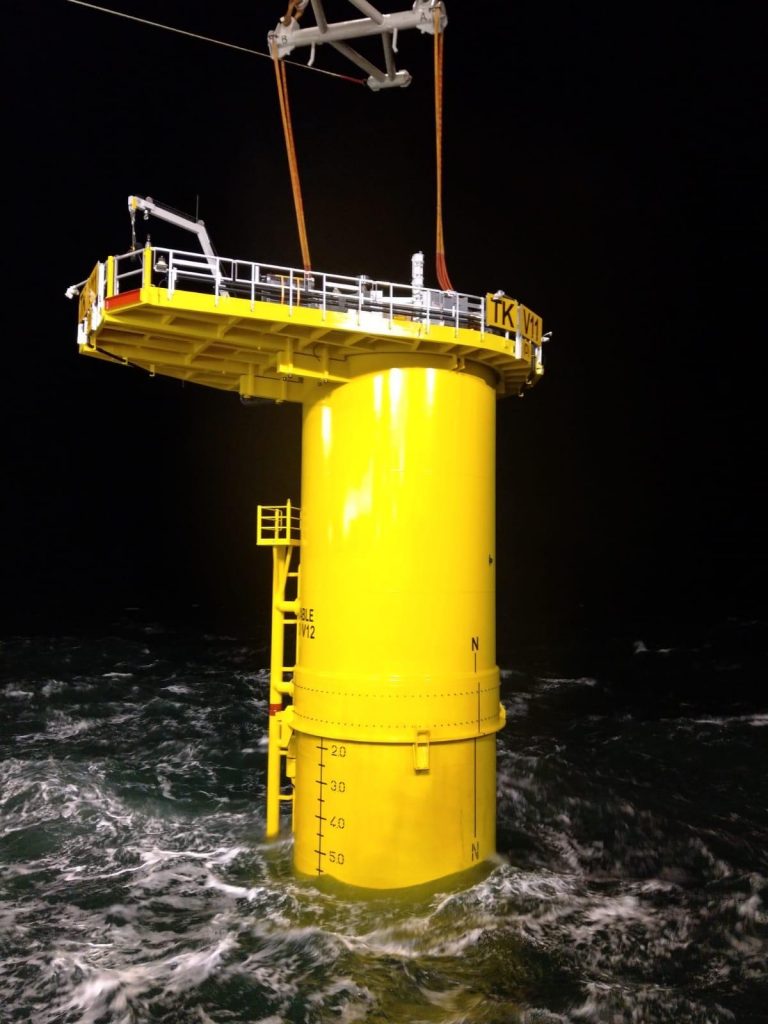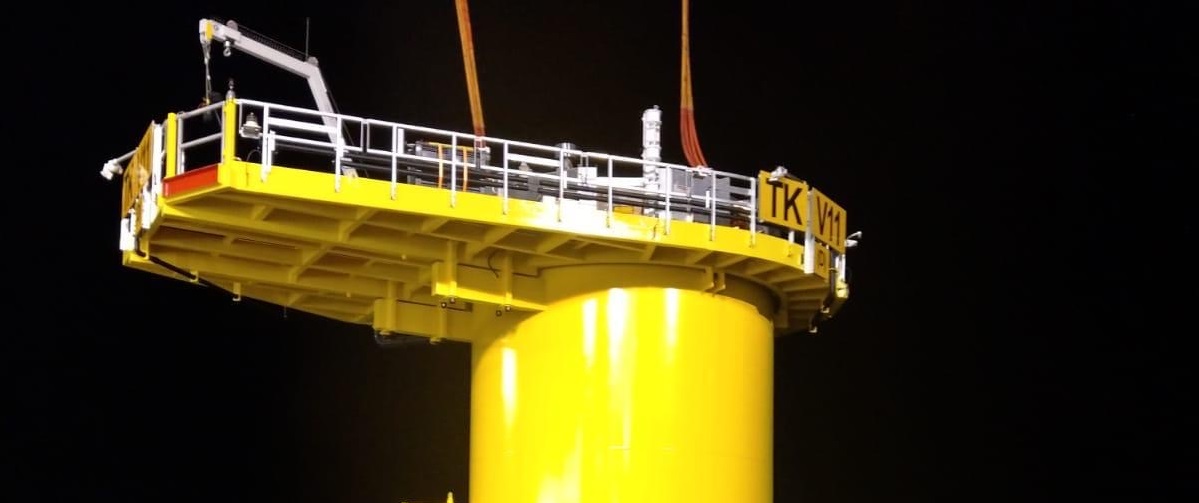
Triton Knoll is delighted to confirm that the first of our 90 wind turbine monopile foundations has been safely and successfully installed, 32km off the Lincolnshire coast.
The c.600 tonne steel monopile and its bright yellow transition piece was installed by Seaway7’s ‘Strashnov’ which is contracted to transport and install all 90 of the wind turbine foundations, as well as the two offshore substation platforms and their foundations.
Julian Garnsey, project director for Triton Knoll and innogy said: “Our first clear weather window of the year has presented us with a great opportunity, and I’m delighted to confirm that the first monopile and transition piece have been safely and successfully installed at Triton Knoll.
“It’s great to see our offshore infrastructure beginning to rise above the surface of the North Sea, thanks to years of hard work, planning and preparation by the project team and innogy. We will continue to press ahead with the foundations programme, as the weather permits, and look forward to installation of the project’s offshore substations and cables later this summer.”
With continuing concern over the pace and impact of climate change, the need for nationally significant offshore wind projects like Triton Knoll to help decarbonise the UK’s energy infrastructure is greater than ever. The state-of-the-art offshore wind farm will have a maximum installed capacity of 857megawatts and, once fully operational, will be the most powerful in the innogy fleet and capable of powering the equivalent of over 800,000 UK homes(1).
The project is located over 32 kilometres off the Lincolnshire coast, with a turbine array that covers an area of 145 square kilometres, bigger than the City of Manchester. It is jointly owned by innogy, J-Power and Kansai Electric Power, with innogy managing the wind farm’s construction and long-term operation and maintenance works, on behalf of its project partners.
Notes
(1) Energy Generation – It is estimated that the average annual generation expected at the site could be equivalent to the approximate domestic needs of an expected minimum of 800,000 average UK households. Energy predicted to be generated by the proposal is derived using wind speeds monitored in the local area and correlated with long term reference data. The energy capture predicted, and hence derived homes equivalent figure may change as further data are gathered. Equivalent homes supplied is based on an annual electricity consumption per home of 4100 kWh. This figure is supported by recent domestic electricity consumption data available from The Digest of UK Energy Statistics and household figures from the UK National Statistics Authority.

